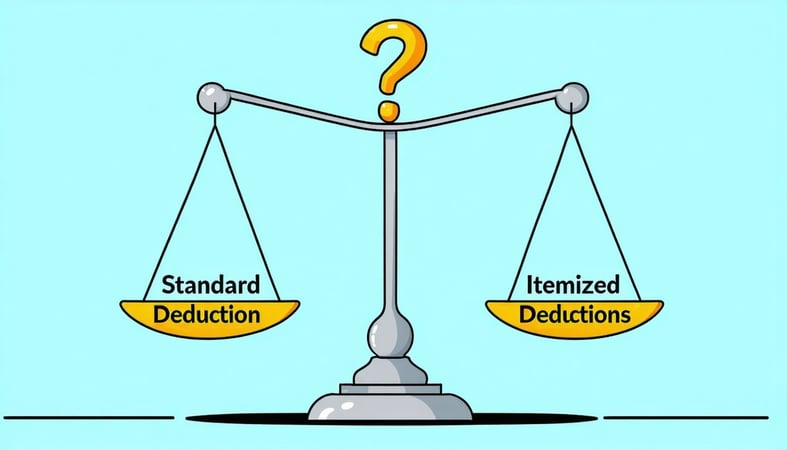
Dear Friend in Finance,
I hear people talk about itemizing deductions. I think I take the standard deduction each year, but I don't know if that's the right option. Which one should I be taking?
Sincerely,
Did I Deduct Correctly?
Dear Did I Deduct Correctly,
You’re not alone—this is one of the most common tax questions I hear! The word “deduction” shows up in multiple places on your tax return, which can make things feel more complicated than they actually are. Let’s break it down.
First, there are two main types of deductions:
Above-the-Line Deductions – These come first and reduce your Adjusted Gross Income (AGI) before you even consider whether to itemize. They include things like contributions to a traditional IRA, student loan interest, and self-employed business expenses. I’ll go into more detail about these in a future post.
Below-the-Line Deductions – This is where you have to decide between taking the Standard Deduction or Itemizing Deductions.
The Standard Deduction is a set amount you can subtract from your taxable income, no questions asked. For 2024, the standard deduction is:
- $14,600 for Single filers
- $29,200 for Married Filing Jointly
- $21,900 for Head of Household
If you take the standard deduction, you don’t need to track any expenses—it’s automatic.
Your other option is to itemize your deductions, which means subtracting certain expenses from your income, but only if their total is higher than the standard deduction for your filing status.
The IRS allows you to use the following expenses as Itemized Deductions:
- Medical and Dental Expenses, but only the portion that exceeds 7.5% of your AGI
- State and Local Taxes (SALT) – This includes income OR sales tax, plus property taxes, but there’s a cap of $10,000 total
- Mortgage Interest – If you have a mortgage, interest on loans up to $750,000 may be deductible
- Investment Interest – Interest paid on money borrowed to invest, up to your net investment income
- Charitable Contributions – Donations to qualified charities, subject to IRS limits
- Casualty and Theft Losses, but only if related to a federally declared disaster
- Gambling Losses, but only up to the amount of gambling winnings you report
So, how do you know which one to take? For most people, the standard deduction is the better choice simply because it’s higher than their total itemized deductions. But itemizing can be worthwhile if:
- You own a home and pay significant mortgage interest
- You live in a high-tax state, and your state and local tax bill reaches the $10,000 SALT cap
- You give substantial charitable donations
- You have large medical bills that exceed the 7.5% AGI threshold
If your total itemized deductions add up to more than the standard deduction, itemizing will save you money. Otherwise, taking the standard deduction is usually the best option.
If you use tax software, it will usually check both options for you and apply whichever is best. If you’re not sure, it’s always a good idea to review your situation with a tax professional.
Please note: this post is for informational purposes only and shouldn’t be taken as tax advice. Always consult a qualified tax professional before making any decisions about your tax return.
Hope this helps!
Sincerely,
Your Friend in Finance
.png?width=100&height=100&name=image0(1).png)



